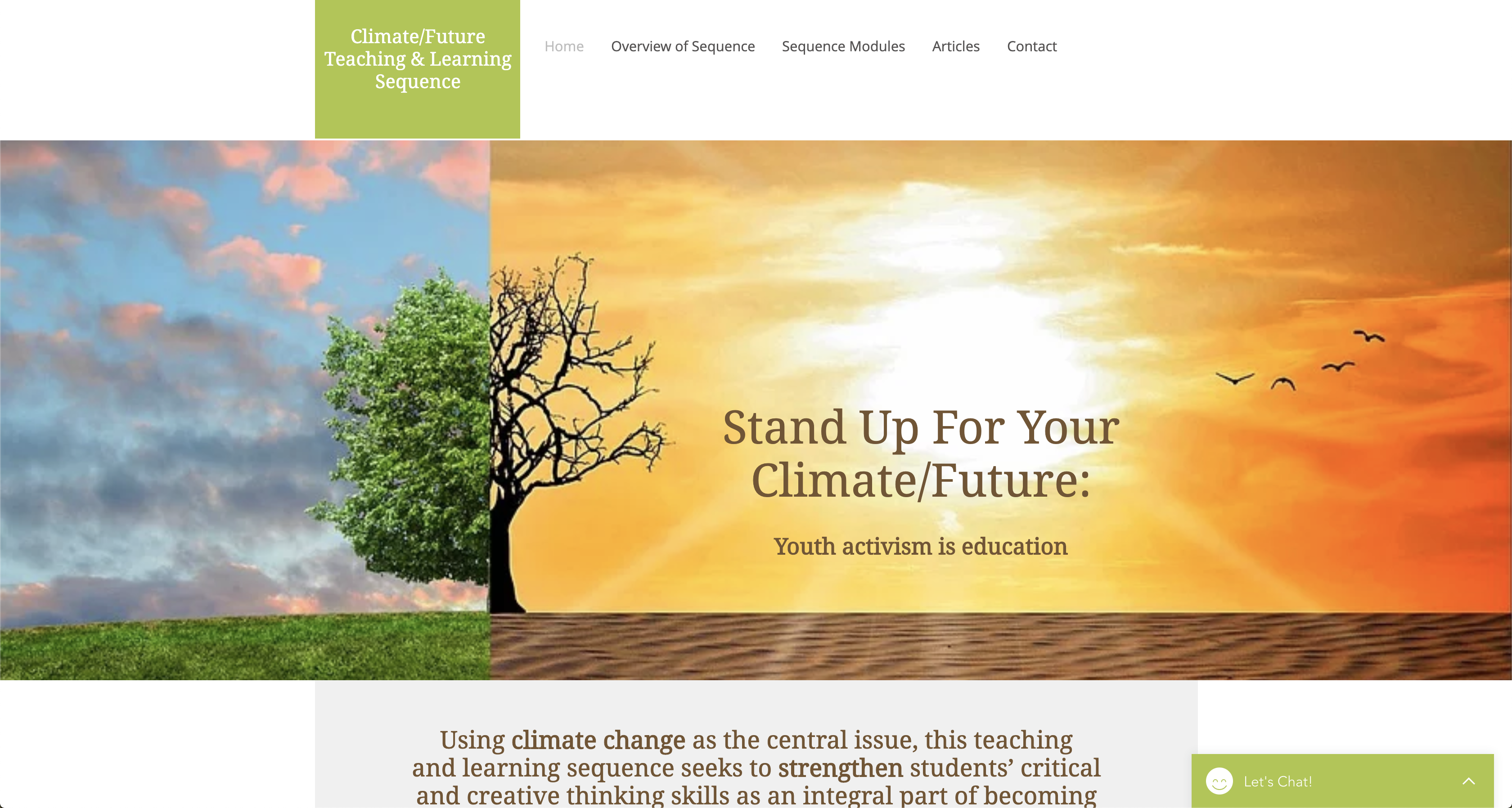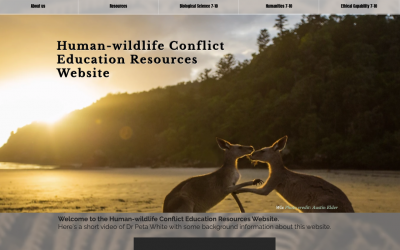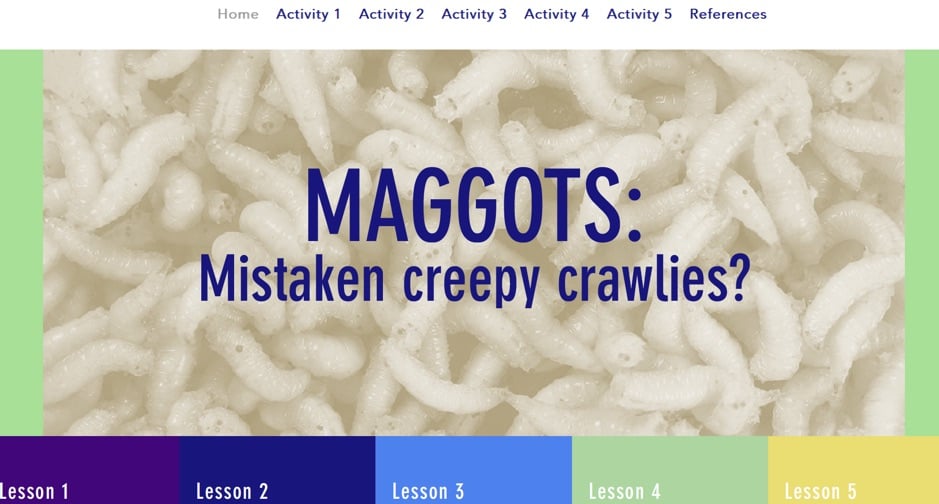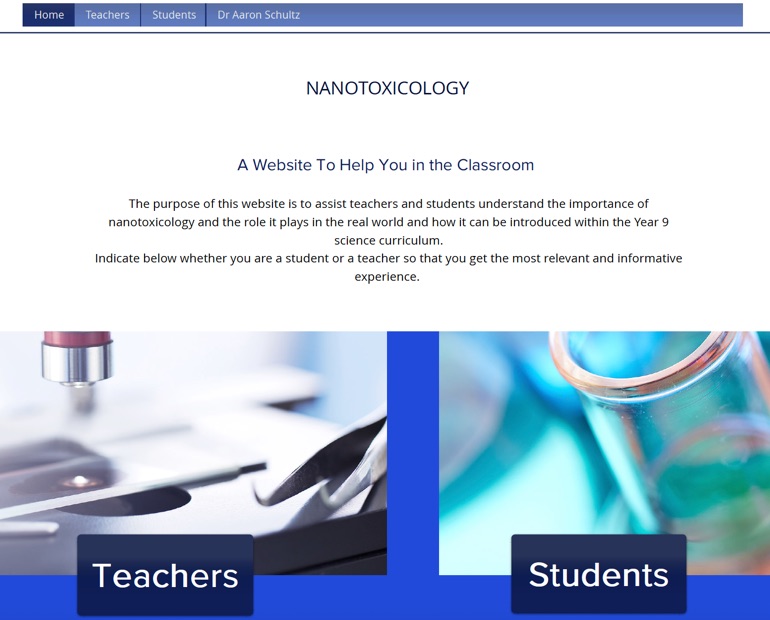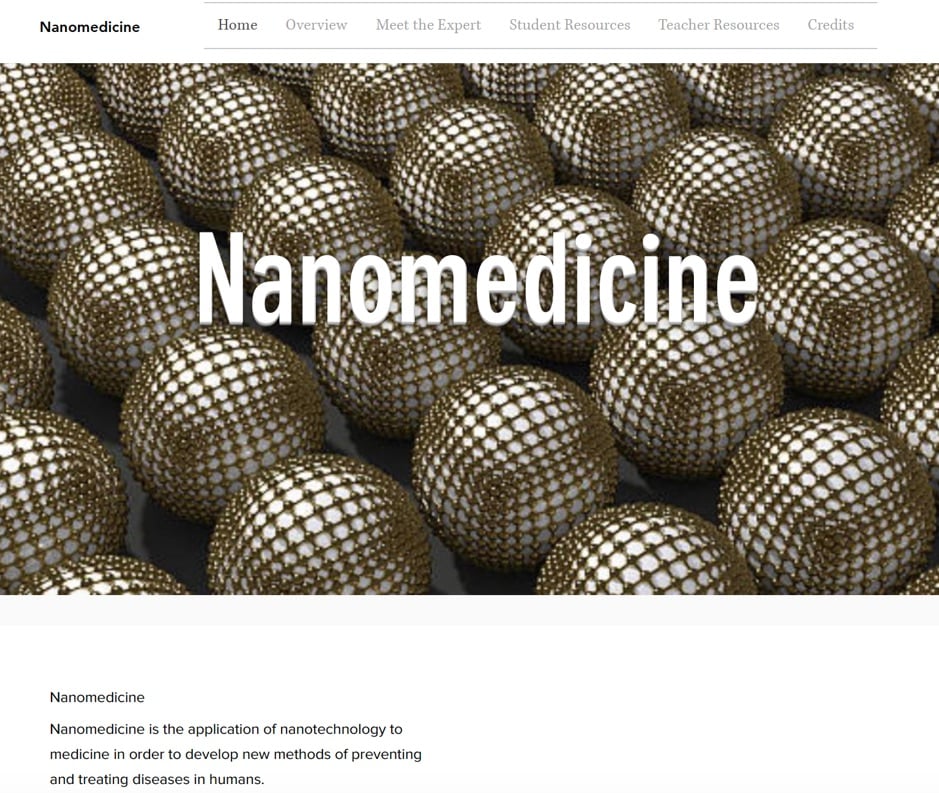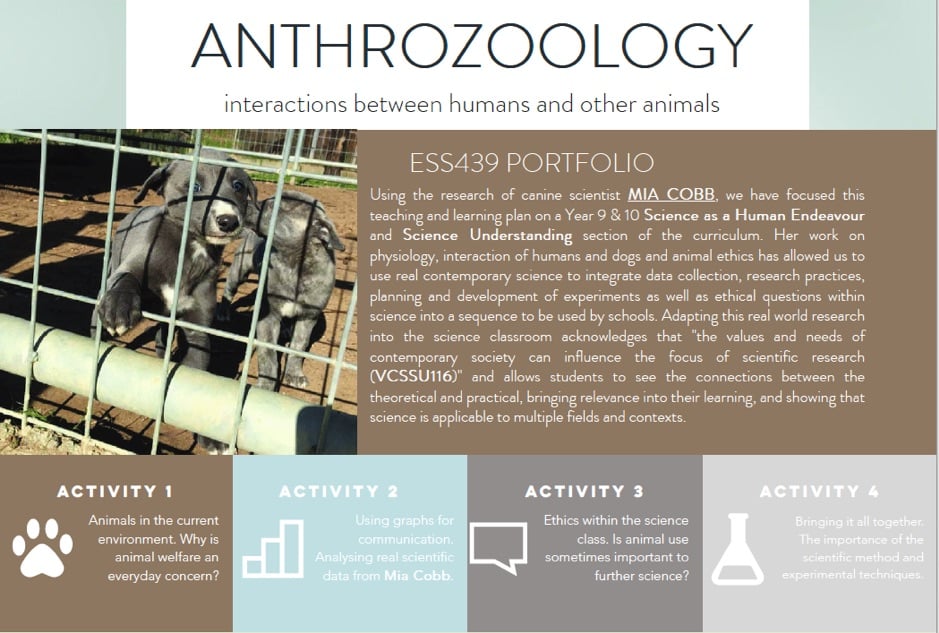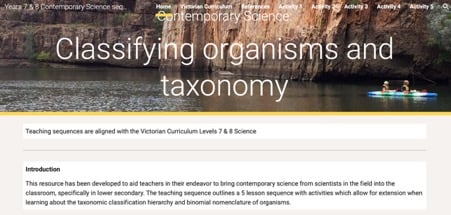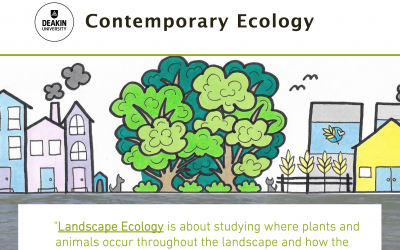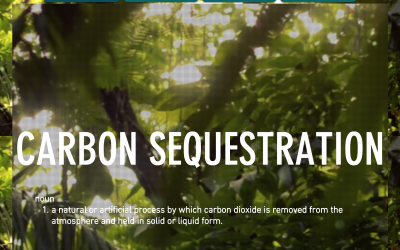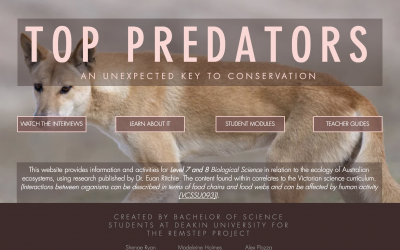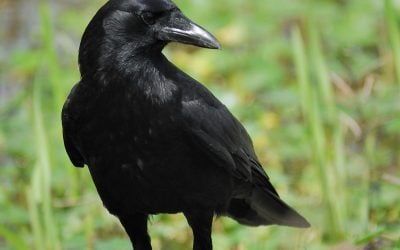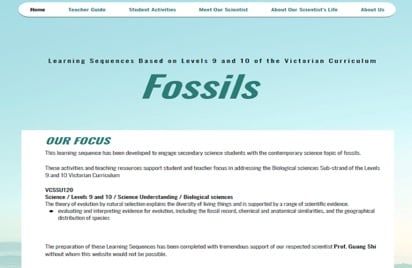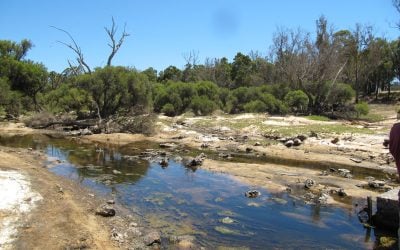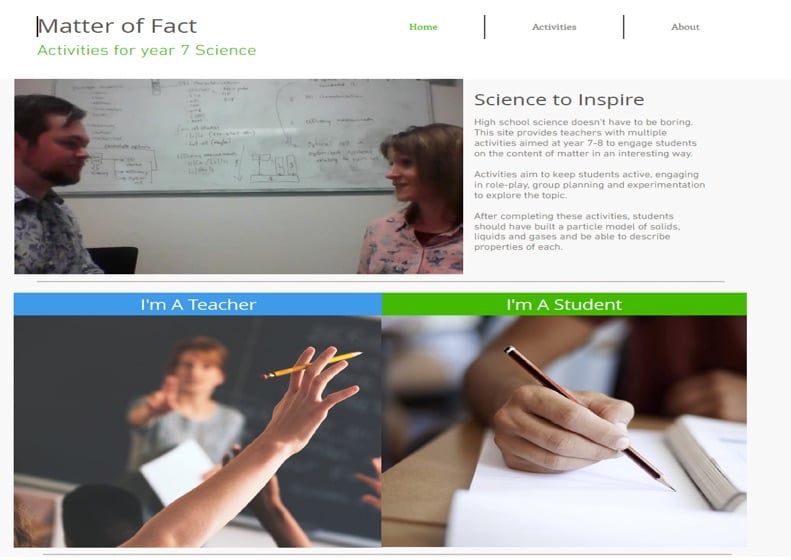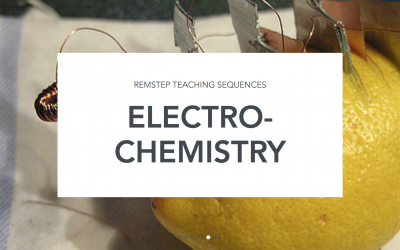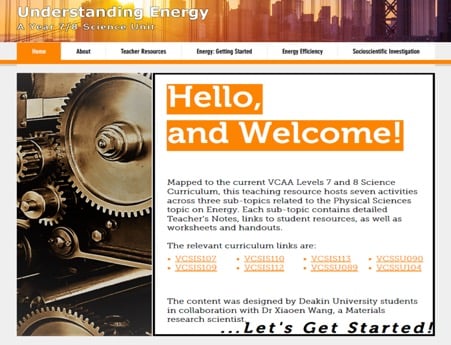Lower Secondary Science
ASELL for Schools - Victorian Node
ASELL for Schools – Victorian Node has developed laboratory learning activities infused with contemporary science contexts and structured to foster engagement and an innovative approach to student inquiry. The activities are relevant for years 7 – 10 with specific curriculum links provided for each activity.
Teachers and schools are invited to join the ASELL for Schools project and work with scientists and science education academics to build laboratory learning activities and develop laboratory teaching skills.
Research and Development in Modern Materials
This resource relates to research and development processes associated with Modern Materials, and includes inquiry activities focused on investigation skills and linked to contemporary research practices.
It also features profiles of young researchers working in materials research that cuts across science and engineering, science ideas and their application.
These activities relate to years 7 – 10 and each of the 5 activities lists the relevant outcomes.
Stand Up For Your Climate/Future: Youth activism is education
In this package, you will find a teaching and learning sequence with eight modules that can be tailored to young people in upper primary and lower secondary; it may be stretched or tightened to suit your needs. It can run for as long or short as you like – adapt it to suit.
The teaching and learning sequence scaffolds learning for young people in classrooms or in other groups/situations; the activities engage students in a reflective process that explores sustainability issues at personal, family, community, municipal, state, federal government levels and beyond.
Using climate change as the central issue, this sequence seeks to strengthen students’ critical and creative thinking skills as an integral part of becoming socially and scientifically literate citizens who act with environmental consciousness for a sustainable future. Young people start by exploring the need for action around sustainability issues important and relevant to them. The complexity of sustainability issues is explored not avoided. There are no simple solutions, and young people should feel enabled to lead change and insist that their voice be heard by those in positions of power.
Biology and Environment
These resources have been produced by students from Deakin University in collaboration with scientists and education academics for the ReMSTEP project and as students of the Community Science Projects unit, run out of the Science faculty at Deakin University.
Human-Wildlife Conflict Education Resources
The Human-Wildlife Conflict Education Resources presents data that reflects the reported conflict cases received by Wildlife Victoria. This data has been developed into an interactive map that highlights geographically the wildlife conflicts of different species from 2000-2019. The interactive map allows you to select a specific year, species, status, cause type or service providers to see the associated cases.
Activities for lower secondary and VCE students have been designed. There are three subjects for lower secondary (biological science, humanities and ethical capabilities), while each activity in the VCE section covers its own topic in relation to environmental science. Of special note is the work presented (with activities) related to the general capabilities – Ethical Capabilities.
Integrative Ecology Education
The Integrative Ecology site is broken down into five Modules, each a separate area of research showcasing an individual Deakin researcher and their current contemporary research. The task was to engage researchers with Deakin University students and integrate the great work the Deakin scientists are doing in a way that combines field research and classroom learning for secondary school teachers and their students. Using the findings within the researcher’s work, tangible activities have been produced that teachers can use to appropriately relate professional and scientific research, into classroom activities and learning. Each Module is broken down into activities for either Levels 7/8 or Levels 9/10 and along with the teacher resources support effective classroom learning and analysis of the research topic. Links to the curriculum and a brief overview of each research topic are provided in each Module home page.
Scientific Modelling
This resource is designed to engage Year 9 and 10 students as well as their teachers in the process of Scientific modelling and experimental design. Dr. Jillian Healy’s research on osmoregulation in fresh water and saltwater fish is the perfect model to involve students in these important areas of science that are essential for their future scientific studies. Students engage with published scientific papers and map them out to identify the connections between the processes that researchers undertake when conducting and publishing research. These activities are aligned to the Victorian Curriculum Level 9 and 10 Science inquiry skills as well as Science understanding in Biological sciences and Science as human endeavour. Ethical capabilities are incorporated into this sequence to provide currency and deeper understandings.
Nurdles
This website provides activities which address Levels 7 and 8 Biological sciences and Science as a human endeavour Sub-strand of the Victorian Curriculum using research undertaken by Dr. Damien Callahan and Andrew Lee on pre-production microplastic nurdles and their impact on ecosystems and the environment. The 5 learning activities enable students to investigate the nature of nurdles and their uses, their ability to connect with metals, the bioaccumulation of these metals in food chains and their impacts on the environment and ecosystems. Students consider the various stakeholders involved in microplastics and their accumulation in the oceans and undertake a debate to consider this environmental issue.
Devils in Danger
This website provides activities which address Levels 9 and 10 Biological sciences Sub-strand of the Victorian Curriculum using research undertaken by Dr. Beata Ujvari on transmissible cancers in Tasmanian Devils. Students will explore inheritance of traits using DNA base sequences and the development of cancers, particularly in Tasmanian Devils. In Module 2 students will calculate allele frequencies and investigate genetic drift and apply their understanding to the evolution of the Tasmanian Devil. In the concluding module, students will investigate endangered species and consider the implications of conservation measures on their survival.
Baw Baw Frogs
The purpose of this website is to equip students with ready-to-go activities and resources inspired by research conducted by PhD student Tom Burns into the declining Baw Baw frog numbers. The following teaching and learning sequence support student and teacher focus of Levels 9 and 10 Biological sciences and Science as a human endeavour Sub-strands of the Victorian Curriculum. Activities include a guided-inquiry practical investigation to explain Tom Burns’ research on the effect of the chytrid fungus on Baw Baw frogs. Students will create a stop motion animation to show how the chytrid fungus compromises regulation in the Baw Baw frogs and participate in a debate to consider ethics in scientific research.
Seaweed Matters
This website is based on research conducted by Dr. Prue Francis, on ‘Neptune’s Necklace’, a type of seaweed which is used to determine the health of the environment it is found in. Through the following activities students will explore why seaweed matters and conduct their own research and investigations to understand why it does matter. This teaching and learning sequence is focused on Levels 9 and 10 Earth and space sciences and Science as a human endeavour Sub-strands of the Victorian Curriculum. Activities include an Introduction to Global Systems, How to Write a Lab Report after conducting an experiment, developing Scientific Literacy Skills, a Stakeholder Debate and a Creative Concluding activity.
Powerful Owls and Ecology
This resource is designed to support students in understanding the effect of urbanisation on Powerful Owls and draws on the research conducted by PhD student Nick Bradsworth. The lesson sequence is aligned to Levels 7 and 8 Biological sciences and Science as a human endeavour Sub-strands of the Victorian Curriculum. The first three modules scaffold students to investigate the concepts underlying Nick’s research, including classification, dichotomous keys, and food webs. Using their understanding of these concepts, students are able to proceed with a deeper understanding when delving into the later modules. The last two modules consider the effects of urbanisation and use these ideas to support their argument during a debate.
Maggots: Mistake Creepy Crawlies?
Students investigate ecosystems and their organisms and the various interactions between them. They consider the scientific research into the role maggots play in medicinal environments and Natalie Gasz research scientist provides an excellent context through her research on the relationship between maggots and the bacterium Proteus mirabilis in medicine. This teaching and learning sequence focuses on Levels 9 and 10 Biological Sciences and Science Inquiry Skills of the Victorian Curriculum.
Nanotoxicology
The purpose of this website is to assist teachers and students understand the importance of nanotoxicology and the role it plays in the real world and how it can be introduced within the Year 9 science curriculum. Indicate below whether you are a student or a teacher so that you get the most relevant and informative experience.
Nanomedicine
This website aims to educate students in Years 7 to 9 about nanotechnology and its applications in medicine specifically in developing new methods for preventing and treating diseases in humans. This website provides a simple and engaging teaching and learning experience to introduce Lower Secondary School students to the world of Nanomedicine through a varying range of teaching and learning resources such as videos, quizzes, worksheets and activities.
Anthrozoology – Interactions between humans and other animals
Canine scientist Mia Cobb’s research on, physiology, interaction of humans and dogs and animal ethics provides a contemporary science platform to integrate data collection, research practices, planning and development of experiments as well as ethical questions within school science. This teaching and learning sequence focuses on Levels 9 & 10 Science as a Human Endeavour and Science Inquiry Skills of the Victorian Curriculum. Adapting this real-world research into the science classroom acknowledges that “the values and needs of contemporary society can influence the focus of scientific research (VCSSU116)” and allows students to see the connections between the theoretical and practical, bringing relevance and context into their learning.
Classifying Organisms and Taxonomy
A lesson sequence developed for Year 7 & 8 Earth and Biological Sciences, focusing on methods of organisation and classification of organisms. The resource, supplemented by research from Deakin University’s Dr Mark Warne, engages students in the many ways the world around us can assist in understanding more about organisms. Students will interact with biological and earth based organisation methods using research conducted by Dr Mark Warne’s on Oceanic Ostracods to provide relevant contextual understanding. Each area within the sequence provides teacher and student support, allowing for thorough curriculum integration within the classroom.
Contemporary Ecology
Two landscape ecology activities have been developed for Victorian year 9 Biological Sciences from the research of Professor Don Driscoll, Deakin University. Landscape ecology is about understanding the things that influence survival of ecological populations. The activities introduce students to the impact of urban development on forest mammals and reptiles in agricultural landscapes. Teacher notes and video support are provided in an engaging format.
Carbon Blue
A fieldwork practical on the topic of Carbon Sequestration developed for year 9 and 10 students.
Students have the opportunity to experience the actual work scientists are conducting internationally as we explore climate change, and the current research providing evidence for the protection of marine and coastal ecosystems.
Top Predators
Three modules have been developed for Year 7 and 8 Biological Science. This resource introduces students to the importance of keystone species and keystone predators in ecosystems using the research of Deakin University ecologist Dr. Euan Ritchie. Students will experience formulating their own hypotheses and explore a real scientific paper. The modules are supported with teacher guides that provide thorough explanations for classroom and curriculum integration.
These resources have been produced in collaboration with scientists, science researchers, academics and education experts.
Investigating Food Webs
This teaching and learning sequence relates to the Year 9 Science Biological Sciences content, focusing primarily on ecosystems and the interactions occurring within them. Research conducted on alpine tree frogs and the Baw Baw frogs by Professor Don Driscoll and his team provides a meaningful context for students to examine food chains and food webs and gain a deep understanding of the organisms and their interactions within these.
Pest Species
The lesson sequence is developed for Year 8 Biological Sciences and focuses on how Interactions between organisms can be described in terms of food chains and food webs and can be affected by human activity. The sequence is based on Laura Xin Lu Tan’s research involving monitoring raven predation activity on penguin eggs on the Summerlands beach in Phillip Island.
Koalas at Cape Otway
This teaching and learning sequence is based on Dr Desley Whisson’s research into population dynamics of Koalas at Cape Otway. The sequence is developed for Year 9 & 10 Biological Sciences with a particular focus on population densities, data collection and analysis, and population dynamics.
Meet the scientists involved in creating these resources. Click a name to learn more about each scientist and watch their interview.
Dr. Aaron Schultz
Aaron Schultz is a research fellow at Deakin University and his research focuses on freshwater fish physiology and toxicology.
A/Prof. Euan Ritchie
Euan Ritchie is a field ecologist and senior lecturer at Deakin University. His research enables him to study the interrelationships between different organisms.
Prof. Leigh Ackland
Leigh Ackland is a professor at Deakin University in the field of biosciences focusing on human health such as cures for disease and environmental problems. Her research involves growing cultured human cells.
Dr. Lee Rollins
Lee Rollins is a member of the faculty of Science, Engineering and Built Environment at Deakin University. Her research looks at invasive species and how they move across invasive ranges.
Earth and Space
These resources have been produced by students from Deakin University in collaboration with scientists and education academics for the ReMSTEP project and as students of the Community Science Projects unit, run out of the Science faculty at Deakin University.
Fossils
This learning sequence has been developed to engage secondary science students with the contemporary science topic on fossils. Professor Guang Shi’s expertise in geology and palaeontology and research on marine fossilisation provides an excellent context for this learning sequence. The following activities and teaching resources support student and teacher focus of Levels 9 and 10 Victorian Curriculum Biological sciences elaboration: the theory of evolution by natural selection explains the diversity of living things and is supported by a range of scientific evidence. Students will be engaged in five learning activities where they will be evaluating and interpreting evidence for evolution, including the fossil record, chemical and anatomical similarities, and the geographical distribution of species.
These resources have been produced in collaboration with scientists, science researchers, academics and education experts.
Earth Sciences and Biology – Biogeography
This sequence combines aspects of year 9 Earth and Space sciences with Biological sciences and introduces students to a field called Biogeography, which is the study of the distribution of flora and fauna over time and space. The teaching and learning sequence starts by exploring the whole world, broadly, focusing on tectonic plates, with each lesson zooming in a little more for students to finally discover specific marine ecosystems in Australia. Each lesson embraces the research of Dr Liz Weldon.
Rocks, Fossils and Geological Time Periods
This teaching and learning sequence has been developed for Year 8 Earth and Space Sciences focusing on sedimentary, igneous and metamorphic rocks and their minerals and how they are formed by processes that occur within Earth over a variety of timescales. The sequence is based on Tamara Camilleri’s research on micropalaeontology looking at 400 MY old organisms.
Geological Time Scale and Rocks
This teaching and learning sequence has been developed for Year 8 Earth and Space Sciences and focuses on understanding the Geological Time Scale and investigating the differences and similarities between rock types. The sequence is based on Tamara Camilleri’s research on micropalaeontology looking at 400 MY old organisms.
Chemistry
These resources have been produced in collaboration with scientists, science researchers, academics and education experts.
Energy Research and the Circular Economy
The Energy Research and the Circular Economy site is broken down into six Modules, each a separate area of research showcasing a Deakin University researcher team from the Institute of Frontier Materials and the STOR Energy ARC Training Centre and their current contemporary research. A public symposium was held where the research teams presented their research and then a team of Deakin Science Students worked with the researchers to represent their research and to design activities suitable for lower secondary students.
Each Module is broken down into activities for either Levels 7/8 or Levels 9/10 and along with the teacher resources support effective classroom learning and analysis of the research topic. Links to the curriculum and a brief overview of each research topic are provided in each Module home page.
Matter of Fact
This site provides teachers with multiple activities aimed at Years 7-8 to engage students on the topic of matter in an interesting way. The following resources support student and teacher focus of Levels 7 and 8 Victorian Curriculum Chemical sciences elaboration: The properties of the different states of matter can be explained in terms of the motion and arrangement of particles. Activities aim to keep students active, engaging in role-play, group planning and experimentation to explore the topic. After completing these activities, students should have built a particle model of solids, liquids and gases and be able to describe properties of each.
Electrochemistry
A web resource package focussed on the research being undertaken to investigate viable options for constructing batteries, as well as exploring the application of thermoelectricity using thermocells to generate electricity efficiently. The resource provides a number of activities and teacher guides for practicals on batteries and energy efficiency for year 9 and 10.
Meet the scientists involved in creating these resources. Click a name to learn more about each scientist and watch their interview.
Dr. Madeleine Dupont
Dr. Madeleine Dupont is an associate research fellow with the Institute of Frontier Materials at Deakin University. Her research is focused on working with thermocells which convert waste heat energy from cars and industry to electrical energy.
Faezeh Makhlooghi Azad
Faezeh is a Doctoral Researcher in the Institute of Frontier Materials (IFM) at Deakin University. Her research is focused on looking at energy systems such as the electrolyte systems of batteries.
Kathleen Beggs
Kathleen is a Doctoral Researcher at Deakin University and her research focus is carbon fibre materials that are used in products such as cars, aeroplanes and prosthetic limbs.
A/Prof. Kieran Lim
Kieran Lim is an Associate Professor in the Faculty of Science, Engineering and Built Environment at Deakin University. His research focuses on how students learn and primarily on forensic science by supporting police and forensic scientists with new science skills and techniques to solve crimes.
Dr. Benjamin Long
Benjamin Long is a Chemistry researcher and lecturer at Deakin University and his research focuses on looking at how molecules interact with each other.
Physics
These resources have been produced by students from Deakin University in collaboration with scientists and education academics for the ReMSTEP project and as students of the Community Science Projects unit, run out of the Science faculty at Deakin University.
Understanding Energy
Mapped to the current VCAA Levels 7 and 8 Science Curriculum, this teaching resource hosts seven activities across three sub-topics related to the Physical Sciences topic on Energy. Each sub-topic contains detailed Teacher’s Notes, links to student resources, as well as worksheets and handouts. Students will explore different forms of energy and understand that energy may be stored, transferred or dissipated. Students apply their understanding to consider energy efficiency in batteries and investigate socioscientific issues related to energy. Dr Xiaoen Wang’s research on developing solid state electrolytes for batteries in cars and electrical devices to make them safer and more efficient is an excellent application for this resource.
Spectroscopy in Schools
Working with ReMSTEP our primary goal was to create a web-based resource that informs lower secondary teachers (Year 7) within Victoria about the applications of spectroscopy. Through exploration of the core principles of spectroscopy we expand to an involved dissection of this scientific method, which highlights current scientific research and applications of Spectroscopy. To achieve our goal we designed five classroom activities and teaching resources encompassing spectroscopic theory which steadily progress the students practical and observational skills, while incorporating and pushing the boundaries of the Victorian school curriculum.
Meet the scientists involved in creating these resources. Click a name to learn more about each scientist and watch their interview.
Dr. John Long
John Long is a senior lecturer in the faculty of Science, Engineering and Built Environment at Deakin University.
Engineering & Technology
These resources have been produced by students from Deakin University in collaboration with scientists and education academics for the ReMSTEP project and as students of the Community Science Projects unit, run out of the Science faculty at Deakin University.
Nanotechnology
This resource is designed to engage years 8-10 students and teachers in the dynamic research area of nanotechnology. The activities and teaching resources span five different topics: Nanotoxicology, Nanochemistry, Nanomedicine and Nanotechnology around Science...
Contemporary Fabrics
The importance of quantifying pilling on textile surface & The science of sport materials.
This resource was produced by an undergraduate Biomedical Science student from Deakin University in collaboration with Associate Professor Stuart Palmer and other scientists and education academics. Dr. Palmer is the Associate Professor in the School of Engineering at Deakin University and has the significant background in engineering and the analysis techniques he has developed over time have enabled him to focus part of his research in objectively measuring the surface quality of textile products.
Meet the scientists involved in creating these resources. Click a name to learn more about each scientist and watch their interview.
A/Prof. Stuart Palmer
Stuart Palmer is a member of Faculty of Science, Engineering and Built Environment at Deakin. His research focuses on the textile surface finish of products like wool and cotton.


